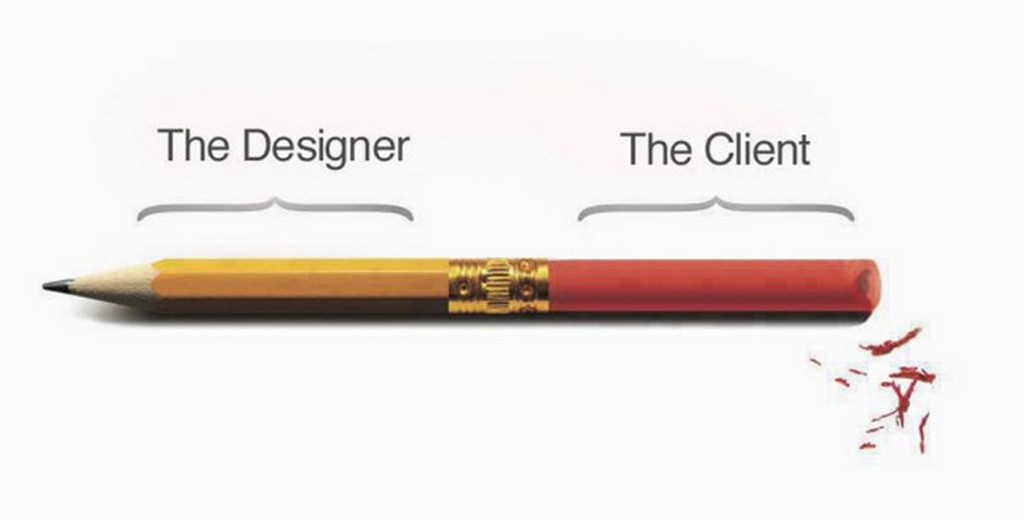1. “I’d like to see a, b, and c…” It’s important to be invested from the beginning and know and communicate your goals and objectives before the design process begins. There is nothing worse than telling a designer, “You have free reign” or “I don’t know what I want, but I know it when I see it.” This provides no real structure or objectives to the design. Design without purpose is only aesthetic and won’t be able to communicate your message.
- Give feedback early and often. Don’t wait to the end to make changes, if something isn’t right speak up.
- Give examples. Show your designer designs you think work and designs you think don’t work.
- Provide existing brand assets. If you already have established a brand provide these assets early. Share any logos, brand colors, typefaces, textures or any other graphical element.
2. “What sort of timeline works for you?” Don’t expect your design tomorrow. A good design takes time. Your designer should discuss with you when to realistically expect a first draft, revisions, and the final design. Keep in mind that design takes time and several specialized skills. What may seem like a simple change could actually cause more visual problems that take time for the designer to address.

Photo courtesy Digital Synopsis.
3. “I understand that it might take a few drafts.” Design is a process – a collaborative process. This may seem obvious, but you and your designer have the same goal in mind – to communicate your message to your audience. With that in mind don’t expect the design to be perfect on the first draft. It may take a few drafts with your feedback to get things right. Speaking of feedback…
4. “I have some constructive, specific feedback!” Avoid generalized feedback. Think in terms of the problem. Designers are problem-solvers. Try to give constructive feedback based upon the problem. Saying “I don’t like it” doesn’t help solve anything. A designer can’t fix personal preference. A better way to address feedback is to think in terms of the problem. What don’t you is it that you like about the design? Does the design too feel cluttered? Is the design off brand? Does it not communicate your main goals? These are examples of substantive feedback that a designer can address and solve.
- Instead of saying “Make it pop,” say “Does this emphasize our main objective?”
- Instead of saying “I don’t like x (color, font, photo) instead “Does X effectively communicate our brand?” Don’t think of the design personally. Don’t think about what you like or dislike think about what communicates to you audience.
- Avoid “I like it” or “I don’t like it.” Instead, point out the elements that are working or not working on the website. Instead say, “I think the navigation is clear and concise and really works well.” Or, “I don’t think this photo is communicating to our target audience.”
5. “What are your thoughts on this?” Listen to your designer. Your designer should have several years of experience. They know what works visually and what doesn’t. Trust in their experience; you hired them for a reason after all.
- Designers usually go through several iterations before even showing you a draft. So the designer should already know what didn’t work for your site.
- Ask the designer what their reasoning was. A good designer should be able to explain why they made the design choices they did.
- Don’t be too controlling. Keep in mind that if a designer left something out, they probably had a reason for doing so.
